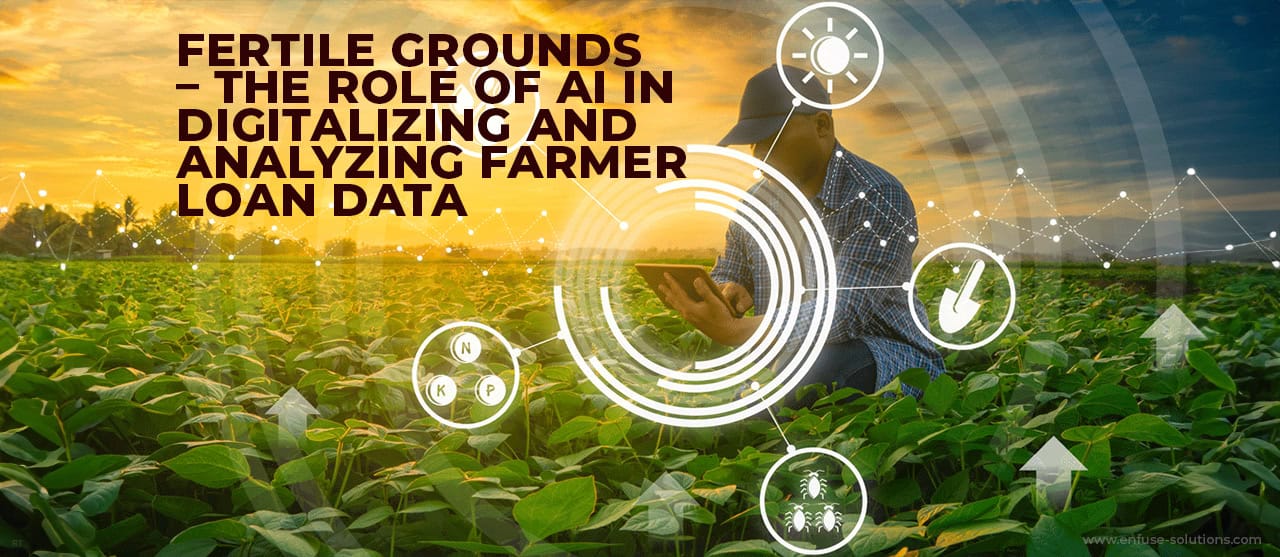
India’s farming landscape is vital for millions, with 70% of rural households relying heavily on agriculture, especially the 82% made up of small farmers. This intense link between farmers and their land calls for game-changing innovations to streamline agricultural methods.
Innovative agricultural initiatives have been undertaken in India, leveraging technology to redefine the agricultural landscape. Notable among these initiatives are:
- Digital Agri Mission 2021–2025: Led by Narendra Singh Tomar, this collaboration with industry giants like Cisco, Ninjacart, Jio Platforms, ITC, and NCDEX aims to fast-track agriculture using AI, blockchain, and drones.
- Jio Agri Platform (Jio Krishi): Launched in Feb 2020, it digitally transforms the entire agricultural value chain, providing precise, personalized guidance through AI algorithms.
- NITI Aayog & IBM Crop Model: This AI-driven collaboration enhances crop output, monitors soil quality, and issues early warnings for disease outbreaks, optimizing agricultural practices for increased productivity.
In this blog, we delve into the transformative role of AI in the analysis and digitalization of farmer loan data, a critical aspect of modernizing and bolstering financial support within the agricultural sector.
5 Key Challenges In Traditional Loan Management
Let’s first understand the key challenges in traditional loan management.
1. Complex Application Process: Traditional loan systems burden farmers with intricate, time-consuming applications, overwhelming those unfamiliar with financial matters.
2. Collateral Challenges: Farming’s unpredictability makes providing sufficient collateral difficult. Fluctuating yields leave farmers with inadequate assets for loan security, hindering loan acquisition.
3. High-Interest Rates: Agricultural loans carry high-interest rates, amplifying repayment challenges during low yields or disasters, straining farmers’ finances, and increasing borrowing costs.
4. Limited Credit Access: Small-scale farmers struggle to access credit due to stringent lender criteria, delaying essential purchases like seeds and equipment.
5. Financial Education Gap: Farmers lack financial education and guidance, leading to negotiation disadvantages and mismanagement in loan handling.
The Role Of AI In Digitalizing And Analyzing Farmer Loan Data
-
Automation Of Loan Processes
Automation, driven by technology, eliminates manual intervention in task execution. In farmer loans, AI takes charge, automating the entire loan cycle, spanning from application to approval. The foremost advantage of automating loan processes lies in the accelerated pace of loan handling. AI’s prowess in rapid data analysis expedites application processing and approvals, far outpacing conventional methods. This agility proves critical for farmers seeking prompt financial aid, particularly in times of urgency.
Additionally, automation eradicates the tediousness and error-prone nature of physical paperwork. AI facilitates online document submission and processing, curbing errors and enhancing efficiency. Farmers gain the flexibility to apply for loans remotely, anytime, enhancing convenience and accessibility.
Beyond speed and convenience, automation holds the promise of diminishing bias in loan approvals. Traditional human-centric evaluations often harbor biases linked to race, gender, or location. AI, driven by algorithms and data, ensures impartial scrutiny of loan applications, fostering fairness in the assessment process.
-
Enhancing Data Accuracy
Traditional methods of handling data, such as manual data entry and storage in spreadsheets, are prone to human errors. These errors can be minor, such as misspelling a name, or major, such as misreading important numbers. Such mistakes can have significant consequences, leading to incorrect loan approvals, incorrect interest rate calculations, and even fraud.
Contrastingly, AI-driven data analysis systems offer heightened reliability and accuracy. Capable of processing extensive data swiftly, these systems minimize error possibilities. AI algorithms continually learn and adapt and can make precise predictions and detect inconsistencies in data. This saves time and also mitigates the likelihood of incorrect decisions stemming from flawed data.
Furthermore, AI systems seamlessly integrate with other platforms, such as credit bureaus, accessing real-time borrower credit histories and financial standings. This integration enhances the accuracy of assessing creditworthiness, ensuring loan approvals are fair and transparent.
-
Predictive Analytics For Agricultural Loans
Lenders face a major hurdle in evaluating farmer loans due to the absence of credit history and financial data. Conventional credit scoring models overlook farmers’ unique situations, impeding their loan accessibility.
Yet, AI-powered predictive analytics revolutionize this by scrutinizing unconventional data like satellite imagery, weather patterns, and social media activity. This holistic approach constructs a more inclusive credit profile for farmers, empowering lenders to render precise credit decisions and broadening loan accessibility.
Predictive analytics in agricultural loans extends its value by foreseeing potential risks and opportunities for farmers and lenders alike. AI dissects historical data, pinpointing patterns like weather shifts, market fluctuations, and crop ailments, that might sway loan repayments. This proactive insight allows lenders to adapt loan terms and equip farmers with resources to mitigate risks, bolstering loan repayment rates.
Moreover, predictive analytics in farmer loan data helps lenders pinpoint underserved communities and evaluate their credit needs. Armed with this insight, lenders can develop tailored financial products and services, fostering financial inclusion within the agriculture sector.
5 Important Benefits Of Digitizing Loan Data
1. Streamlined Credit Access: Traditionally arduous, credit access for farmers is now simplified through digitization. Swift verification of borrower information ensures prompt credit decisions, crucial for operational needs.
2. Comprehensive Financial Oversight: Digitizing loan data provides farmers with an extensive financial overview. Through digital platforms, they can efficiently monitor repayments, track expenses, and make informed decisions about agricultural operations.
3. Heightened Transparency: Digitized loan data eliminates paperwork and reduces errors, promoting transparency between farmers and financial institutions. Immediate access to identical information ensures fairness throughout the loan process.
4. Optimized Risk Management: Digitization empowers financial institutions to make informed decisions on creditworthiness and develop precise risk assessment models through real-time data and historical analysis.
5. Empowering Small-Scale Farmers: Digitizing loan data opens avenues for small-scale farmers to access formal credit facilities, fostering competition with larger farms and contributing to overall sector growth.
The Bright Future Ahead For Indian Agriculture
AI reshapes farmer loans, boosting accessibility and reliability. Streamlined processes, precise data, and predictive analytics expedite approvals and bolster risk management. This automation drives financial inclusion, marking a pivotal shift in agricultural lending.
To harness the full potential of the digital revolution in agriculture, envision EnFuse as your strategic partner in navigating the challenges ahead. With our expertise in providing holistic digital solutions to tackle complex business issues, EnFuse is poised to enable organizations to thrive. To embark on this transformative journey, reach out to us today.

















Comment